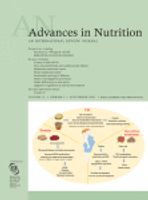How is pyridoxine deficiency diagnosed?
How is pyridoxine deficiency diagnosed?
Pyridoxine deficiency can be diagnosed by clinical evaluation and physical examination. Clinicians may look for the key signs of deficiency, including dermatological findings, presence of altered mental status, and peripheral neuropathy. They can also take a focused history and obtain records of nutritional intake, supplement use, and medication history. Also critically important is eliciting a history of increased risk, including those with malabsorption syndromes, such as inflammatory bowel disease, celiac disease, or history of bariatric surgery.
The exam should also be age focused. In a neonate with seizures and mothers with poor nutritional status, vitamin B6 deficiency may be suggested. It should also be considered in any infant who has seizures; an adult who has seizures refractory to treatment with antiseizure drugs; adults with deficiencies of the other B vitamins, including niacin and cobalamin (i.e. B12); and particularly in individuals with an alcohol use disorder or malnutrition. Diagnosis of vitamin B6 deficiency is usually made based on a clinical exam; however, deficiency can also be detected by direct assay of blood or urine. Nerve conduction studies may also reveal severely reduced sensory nerve action potentials, and nerve biopsy can assess for degeneration of small and large myelinated nerve fibers.What are the signs and symptoms of pyridoxine deficiency?
What are the signs and symptoms of pyridoxine deficiency?
Individuals with borderline vitamin B6 concentrations or mild deficiency might have no signs or symptoms for months or even years. Those with prolonged or severe pyridoxine deficiency may experience peripheral neuropathy and a pellagra-like syndrome. Pellagra is a disease that occurs when a person does not receive enough of vitamin B3, or niacin. It is characterized by dermatitis, dementia, and diarrhea. In those with pyridoxine deficiency, individuals may often experience skin conditions, such as seborrheic dermatitis, which is characterized by a red, itchy rash on the scalp, face, neck and upper chest. It typically has an oily, flaky appearance and may cause swelling or white patches. One of the functions of vitamin B6 is to produce collagen, a protein in the skin that provides strength and elasticity. Without adequate levels of Vitamin B6, the skin barrier may break down, leading to dermatological conditions. Cheilosis (i.e., scaling on the lips and cracks at the corners of the mouth) and glossitis (i.e., swollen tongue) are also characteristic signs. In the case of glossitis, the tongue becomes enlarged, smooth, and red as it loses the papillae, or raised protrusions, on the tongue.
Importantly, deficiency of B6 can cause nerve damage, leading to burning, shooting and tingling pain in the arms, legs, hands, and feet. It may feel like “pins and needles” and can also result in clumsiness, balance problems, and difficulty walking. Individuals may also experience confusion, depression, electroencephalogram abnormalities, seizures, and a weakened immune system. Vitamin B6 is necessary for the production of antibodies and white blood cells, such as T cells, needed to fight infection. Without these cells regulating the immune function, it is unable to respond appropriately. Additionally, microcytic anemia, characterized by the presence of small, pale red blood cells, can also occur as the body needs vitamin B6 to make hemoglobin and increase the amount of oxygen carried by hemoglobin. In infants, vitamin B6 deficiency causes irritability, abnormal hearing, and convulsive seizures.What causes pyridoxine deficiency?
What causes pyridoxine deficiency?
There can be several causes of pyridoxine deficiency, including consuming less than the recommended dietary allowance (RDA) per day. For men ages 14-50, the RDA is 1.3mg; 51+ years, 1.7 mg. For women 4-18 years, it is 1.2 mg; 19-50 years, 1.3 mg; 51+ years, 1.5 mg. This amount increases to 2.0mg in those who are pregnant or lactating. The richest sources of vitamin B6 include fish, beef liver and other organ meats, potatoes and other starchy vegetables, and non-citrus fruits. In the United States, adults also obtain a lot of their dietary vitamin B6 intake from fortified cereals and poultry. Notably, vitamin B6 found in meats are more easily absorbed and used by the body than vitamin B6 from plants and vegetables, which may be important to those who exclusively follow a vegetarian or vegan diet.
Another well-known cause of pyridoxine deficiency is the use of isoniazid, an antibiotic drug used to prevent and treat tuberculosis. Isoniazid causes a depletion of vitamin B6 by inhibiting an enzyme (pyridoxine phosphokinase) necessary for pyridoxine synthesis.
